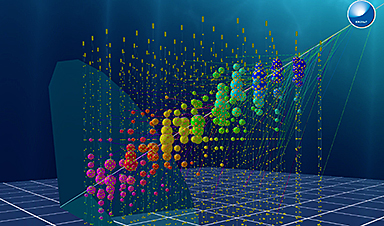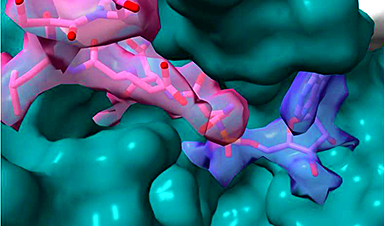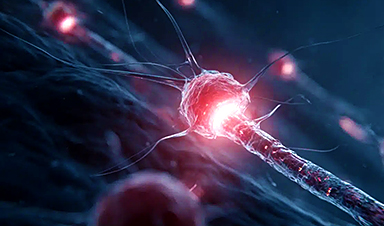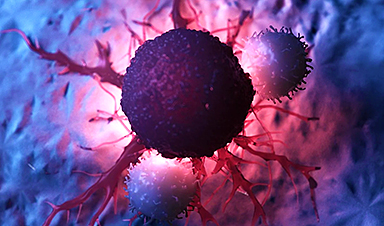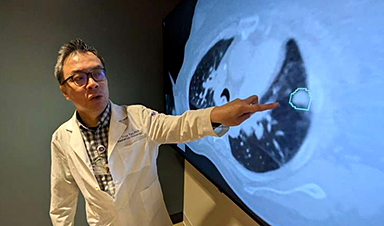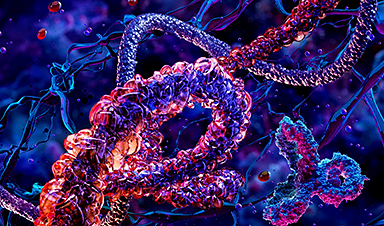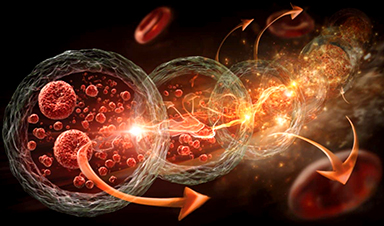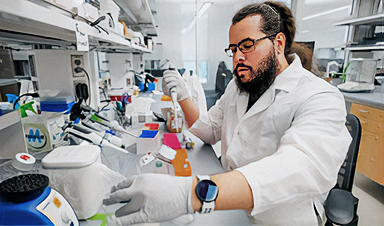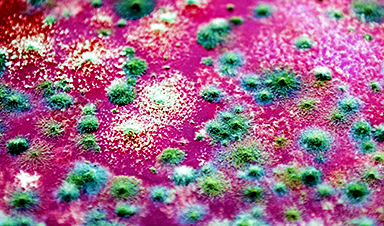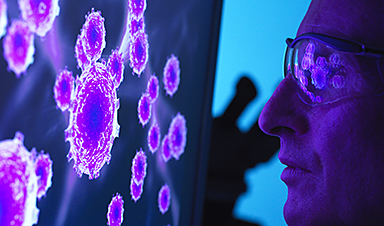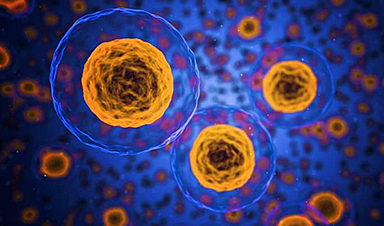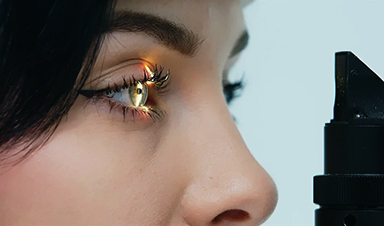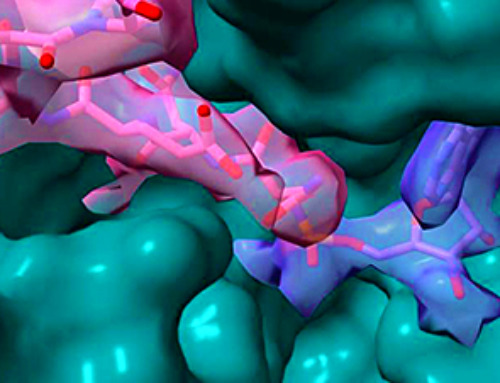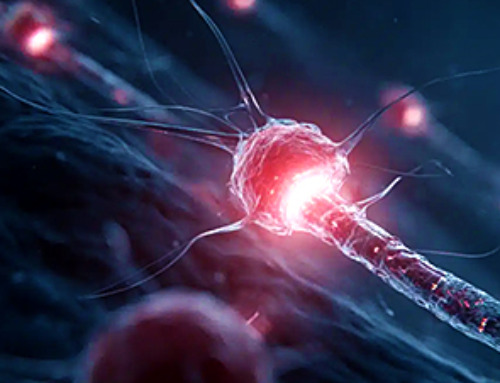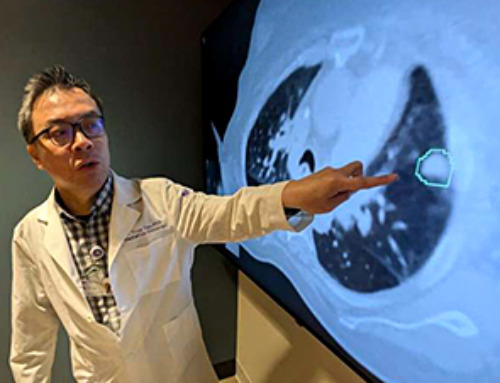Quantum gravity is the missing link between general relativity and quantum mechanics, the yet-to-be-discovered key to a unified theory capable of explaining both the infinitely large and the infinitely small. The solution to this puzzle might lie in the humble neutrino, an elementary particle with no electric charge and almost invisible, as it rarely interacts with matter, passing through everything on our planet without consequences.
For this very reason, neutrinos are difficult to detect. However, in rare cases, a neutrino can interact, for example, with water molecules at the bottom of the sea. The particles emitted in this interaction produce a “blue glow” known as Čerenkov radiation, detectable by instruments such as KM3NeT.
The KM3NeT (Kilometer Cube Neutrino Telescope) is a large underwater observatory designed to detect neutrinos through their interactions in water. It is divided into two detectors, one of which, ORCA (Oscillation Research with Cosmics in the Abyss), was used for this research. It is located off the coast of Toulon, France, at a depth of approximately 2,450 meters.
However, merely observing neutrinos is not enough to draw conclusions about the properties of quantum gravity—we must also look for signs of “decoherence.”
As they travel through space, neutrinos can “oscillate,” meaning they change identity—a phenomenon scientists refer to as flavor oscillations. Coherence is a fundamental property of these oscillations: a neutrino does not have a definite mass but exists as a quantum superposition of three different mass states. Coherence keeps this superposition well-defined, allowing the oscillations to occur regularly and predictably. However, quantum gravity effects could attenuate or even suppress these oscillations, a phenomenon known as “decoherence.”
“There are several theories of quantum gravity which somehow predict this effect because they say that the neutrino is not an isolated system. It can interact with the environment,” explains Nadja Lessing, a physicist at the Instituto de Física Corpuscular of the University of Valencia and corresponding author of this study, which includes contributions from hundreds of researchers worldwide.
“From the experimental point of view, we know the signal of this would be seeing neutrino oscillations suppressed.” This would happen because, during its journey to us—or more precisely, to the KM3NeT sensors at the bottom of the Mediterranean—the neutrino could interact with the environment in a way that alters or suppresses its oscillations.
However, in Lessing and colleagues’ study, the neutrinos analyzed by the KM3NeT/ORCA underwater detector showed no signs of decoherence, a result that provides valuable insights.
“This,” explains Lessing, “means that if quantum gravity alters neutrino oscillations, it does so with an intensity below the current sensitivity limits.” The study has established upper limits on the strength of this effect, which are now more stringent than those set by previous atmospheric neutrino experiments. It also provides indications for future research directions.
“Finding neutrino decoherence would be a big thing,” says Lessing. So far, no direct evidence of quantum gravity has ever been observed, which is why neutrino experiments are attracting increasing attention. “There has been a growing interest in this topic. People researching quantum gravity are just very interested in this because you probably couldn’t explain decoherence with something else.”
More information: Search for quantum decoherence in neutrino oscillations with six detection units of KM3NeT/ORCA, Journal of Cosmology and Astroparticle Physics (2025). On arXiv: DOI: 10.48550/arxiv.2410.01388
Journal information: arXiv
Provided by SISSA Medialab
News
Team finds flawed data in recent study relevant to coronavirus antiviral development
The COVID pandemic illustrated how urgently we need antiviral medications capable of treating coronavirus infections. To aid this effort, researchers quickly homed in on part of SARS-CoV-2's molecular structure known as the NiRAN domain—an [...]
Drug-Coated Neural Implants Reduce Immune Rejection
Summary: A new study shows that coating neural prosthetic implants with the anti-inflammatory drug dexamethasone helps reduce the body’s immune response and scar tissue formation. This strategy enhances the long-term performance and stability of electrodes [...]
Scientists discover cancer-fighting bacteria that ‘soak up’ forever chemicals in the body
A family of healthy bacteria may help 'soak up' toxic forever chemicals in the body, warding off their cancerous effects. Forever chemicals, also known as PFAS (per- and polyfluoroalkyl substances), are toxic chemicals that [...]
Johns Hopkins Researchers Uncover a New Way To Kill Cancer Cells
A new study reveals that blocking ribosomal RNA production rewires cancer cell behavior and could help treat genetically unstable tumors. Researchers at the Johns Hopkins Kimmel Cancer Center and the Department of Radiation Oncology and Molecular [...]
AI matches doctors in mapping lung tumors for radiation therapy
In radiation therapy, precision can save lives. Oncologists must carefully map the size and location of a tumor before delivering high-dose radiation to destroy cancer cells while sparing healthy tissue. But this process, called [...]
Scientists Finally “See” Key Protein That Controls Inflammation
Researchers used advanced microscopy to uncover important protein structures. For the first time, two important protein structures in the human body are being visualized, thanks in part to cutting-edge technology at the University of [...]
AI tool detects 9 types of dementia from a single brain scan
Mayo Clinic researchers have developed a new artificial intelligence (AI) tool that helps clinicians identify brain activity patterns linked to nine types of dementia, including Alzheimer's disease, using a single, widely available scan—a transformative [...]
Is plastic packaging putting more than just food on your plate?
New research reveals that common food packaging and utensils can shed microscopic plastics into our food, prompting urgent calls for stricter testing and updated regulations to protect public health. Beyond microplastics: The analysis intentionally [...]
Aging Spreads Through the Bloodstream
Summary: New research reveals that aging isn’t just a local cellular process—it can spread throughout the body via the bloodstream. A redox-sensitive protein called ReHMGB1, secreted by senescent cells, was found to trigger aging features [...]
AI and nanomedicine find rare biomarkers for prostrate cancer and atherosclerosis
Imagine a stadium packed with 75,000 fans, all wearing green and white jerseys—except one person in a solid green shirt. Finding that person would be tough. That's how hard it is for scientists to [...]
Are Pesticides Breeding the Next Pandemic? Experts Warn of Fungal Superbugs
Fungicides used in agriculture have been linked to an increase in resistance to antifungal drugs in both humans and animals. Fungal infections are on the rise, and two UC Davis infectious disease experts, Dr. George Thompson [...]
Scientists Crack the 500-Million-Year-Old Code That Controls Your Immune System
A collaborative team from Penn Medicine and Penn Engineering has uncovered the mathematical principles behind a 500-million-year-old protein network that determines whether foreign materials are recognized as friend or foe. How does your body [...]
Team discovers how tiny parts of cells stay organized, new insights for blocking cancer growth
A team of international researchers led by scientists at City of Hope provides the most thorough account yet of an elusive target for cancer treatment. Published in Science Advances, the study suggests a complex signaling [...]
Nanomaterials in Ophthalmology: A Review
Eye diseases are becoming more common. In 2020, over 250 million people had mild vision problems, and 295 million experienced moderate to severe ocular conditions. In response, researchers are turning to nanotechnology and nanomaterials—tools that are transforming [...]
Natural Plant Extract Removes up to 90% of Microplastics From Water
Researchers found that natural polymers derived from okra and fenugreek are highly effective at removing microplastics from water. The same sticky substances that make okra slimy and give fenugreek its gel-like texture could help [...]
Instant coffee may damage your eyes, genetic study finds
A new genetic study shows that just one extra cup of instant coffee a day could significantly increase your risk of developing dry AMD, shedding fresh light on how our daily beverage choices may [...]
